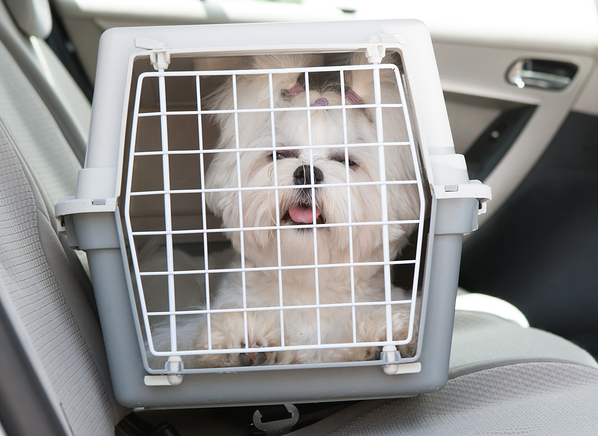It’s a worldwide trend: Our pets are joining us more and more on vacation. That was happening before the pandemic, and it hasn’t stopped. But with that comes the importance of ensuring our pets’ safety on the road, especially with car travel.
A study published last year on PubMed compared pet travel in the United States, United Kingdom, and Australia. One of the findings was that a lack of restraint is likely to be associated with an increased risk of serious injury or death in the case of an accident, and in some cases may even precipitate an accident. The aim of the study was to determine the frequency of use of dog restraints, with 600 to 700 people surveyed from each country.
So which country had more citizens appropriately restraining their dogs? The U.K. led the way, with 72 percent restraining their dogs, followed by Australia with 67 percent, and then the U.S., with just over half taking care to protect their pets.
The most common method of restraint in the U.S. and U.K. was a cage or crate in the vehicle cargo area. In Australia, most dogs were harnessed or tethered and attached to a seatbelt.
In the United Kingdom, there’s clear incentive to protect pets; the Highway Code has a specific statement describing suitable restraint for dogs in cars. Failure to comply with these regulations can lead to invalidation of the driver’s car insurance.
Other findings regarding restraint of dogs in cars included the following:
- Small dogs were restrained more frequently than larger dogs.
- Older owners were more likely to restrain their dogs than younger owners.
- Owners driving minivans or vans were more likely to restrain their dogs than those driving small- to medium-size cars or SUVs.
The nonprofit Center for Pet Safety offers a list of certified carriers, crates, and transports for cars and information about restraining dogs in vehicles. Lindsey Wolko, founder of the CSP, says, “Restraint is something everyone should do for their pets, to protect their pets, just like we routinely wear seatbelts. The problem is that not all products are equally protective. No question, pet lives can be saved.”
Using Fear Free techniques to minimize the fear, anxiety, and stress pets can feel about car rides, makes whatever restraint is used easier to implement with little or no protest from pets, making short or long car trips safer for all.
This article was reviewed/edited by board-certified veterinary behaviorist Dr. Kenneth Martin and/or veterinary technician specialist in behavior Debbie Martin, LVT.
Steve Dale, CABC (certified animal behavior consultant), hosts two national pet radio shows and is on WGN Radio, Chicago. He’s a regular contributor/columnist for many publications, including CATSTER, Veterinary Practice News, and the Journal of the National Association of Veterinary Technicians in America. He’s appeared on dozens of TV shows, including Oprah, many Animal Planet Programs, and National Geographic Explorer. He has contributed to or authored many pet books and veterinary textbooks such as “The Cat: Clinical Medicine and Management” and co-edited Decoding Your Dog, by the American College of Veterinary Behaviorists. He speaks at conferences around the world. www.stevedale.tv.








